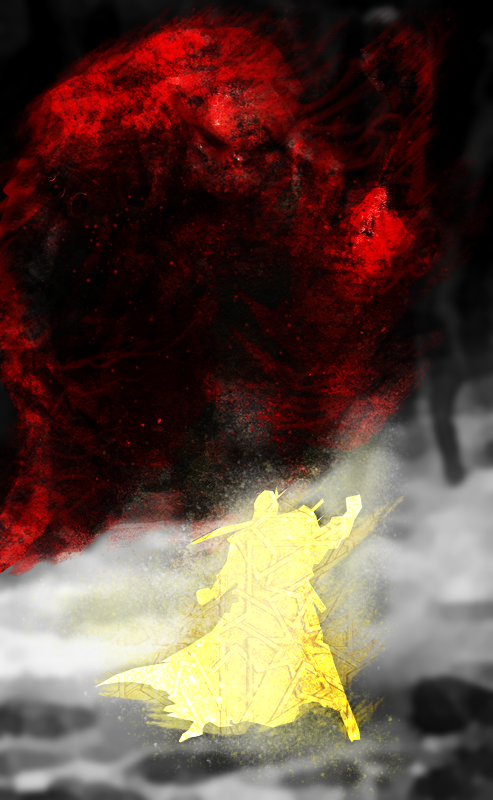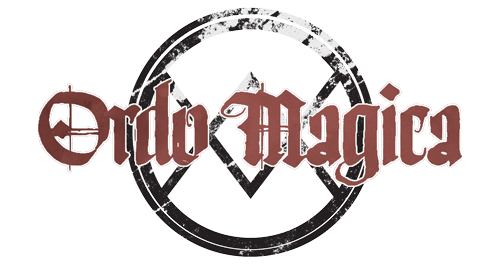
Witchsight
The Witchsight ability seems strangely worded, and does not seem to fit very well with how shadows are actually described throughout the game and its supplements. As written, a character with Witchsight at Novice level would not be able to detect traces of corruption in a creature’s shadow. That is unless that creature has already passed its corruption threshold, at which point they will have a stigma and thus already identifiable as reckless and tainted even without the ability. What’s more, without information about corruption, the colour of a creature’s shadow is virtually useless. There seems to be no inherent value attached to the nature of a shadow, and thus use of the ability provides no actionable information.
Also, the increasing danger of corruption in exchange for a questionable or modest reward seems prohibitive. At Master level, a character is risking 1D8 Temporary Corruption – an amount that is dangerous even to a character that is Exceptionally Resolute. Compare this to literally any Mystical Power where 1D4 Temporary Corruption is the most you will suffer and the power ramps dramatically. If Witchsight was a Mystical Power it would be terrible, but a player is expected to pay the same amount of experience to advance it.
The situations where Witchsight is useful is in spotting dangerous artefacts, tainted areas, and corrupted individuals. In most cases, this is not checked in stressful combat scenes, and thus Temporary Corruption becomes largely irrelevant. It is one of the game’s rare non-combat abilities, but could benefit from more features to make it valuable and most of all engaging and fun to use.
Moreover, as Witchsight relies on the Vigilant attribute it seems fitting to make it an attractive ability for other character concepts that rely on Vigilant, such as hunters, trackers, and investigators
Witchsight (Revised)
All living things burn with an inner fire, a soul painted in vibrant colour that casts a shadow unseen by most mortals. To cast one’s sight into the realm of shadows reveals many things, but also invites danger. To gaze into this world of mystical lights that underpins creation is to drink corruption through greedy eyes. On occasion acquired at birth, but most commonly learned through meditation and careful instruction, this ability is practiced among most races and cultures.
Legends tell of barbarian hunters who track prey and monsters by their shadows, and witches who can perceive the details of battles fought hours before. Among the Ambrians, witchsight is considered a distasteful but necessary practice, mainly employed by the witchhunters of the Twilight Friars to identify evildoers and to hunt down blight beasts.
Novice: As a free action, the character takes 1D4 temporary corruption and rolls Vigilant. If successful, they can discern the nature of shadows around them and get a vague sense of their degree of corruption.
Adept: The witch-seer’s ability to gaze beyond the limitations of the physical world in hunt for shadows reveals living creatures or magical objects which would otherwise be concealed by darkness or camouflage. If used in combat, this gives the character Advantage on one attack per round for the rest of the scene.
Master: The character can perceive the faint and fleeting traces that shadows leave in the world. Their witchsight can reveal if any living creatures or magical items have moved through the area and what their natures were. If a creature’s shadow is known, it can be tracked this way. The traces of all shadows are erased at midday and on the night of a new moon.
The Nature of Shadows
In an effort to make Witchsight actually give the player access to some useful knowledge, here follows some suggestions for attaching meaning to creatures’ shadows. This will also provide Game Masters with a guideline for creating and describing the shadows of NPC characters and creatures, and codifies a light variant of an “alignment” system according to the three ur-forces of conflict in the setting.
First of all, I have been playing around with the idea of having shadows reveal a character’s dominant attributes. Of course, there are eight attributes in Symbaroum and that seems both too many to pick distinctive colours for, and it would be too granular information. Witchsight should not be an exact science and should not reveal too specific information about what is on a character’s sheet. Thus, I would suggest grouping the attributes into pairs, and making each pair correspond to a shadow colour.
For example:
Accurate / Vigilant – Silver/White
Cunning / Resolute – Gold/Green
Discreet / Persuasive – Iron/Blue
Quick / Strong – Copper/Red
You can add the attribute pair together and the highest pair determines the colour, or for faster selection just determine the shadow’s colour by the highest attribute.
In truth, every creature would have all of these shadows, but only one would present as the dominant one. A creature’s dominant shadow might change over the course of their lives as they themselves change, and this might show itself as traces in their presented shadow.
As you can tell, the colours have a metallic variant and a primary variant. This corresponds to a character’s alignment. In short, if a character is Civilized (Ambrian) they have metallic shadows, and if a character is Wild (Barbarian) their shadows have primary colours. These alignments correspond to the two ur-forces Wielda (Control/Exploitation/Culture) and Wyrtha (Creation/Nurturing/Nature). Characters transitioning from one culture to another may see their shadows change along with their personalities and lives, with traces of metal or natural hues overpowering their previous nature.
The third ur-force is Wratha, who represents hunger, greed, and destruction. Her shadow tint is the black mark of Corruption. All creatures that fall completely to corruption have their shadows thoroughly stained with darkness, and they present themselves as burnt, sickly, or otherwise off-putting versions of their original shadows. Creatures born from blight traditionally have shadows of pitch black, their inherent nature impossible to discern by a witch-seer.
Celestial Shadows
I’m personally enamored with the idea of gifted barbarians hunting using their second sight. That train of thought also led me to the idea of a “second hunter’s moon” – that the world is bathed in strange invisible light on the night of a new moon. Normal hunters (and ordinary beasts) stalk Davokar for prey in the bright silver glow of the full moon, but a hunter with witchsight could walk through the forest on the darkest night and enjoy a heavenly light illuminating the land in an otherworldly glow.
The sun might also have its own shadow, and indeed this is what inspired the time limits for the ability’s master level above. The idea is that the midday sun floods the world not only with literal light but also a corresponding mystical light so powerful it drowns any lingering traces that other shadows may leave. This would of course be a major inspiration for the belief in Prios’ supremacy. Unless the sun and moon of Symbaroum’s planet are suspended in some geocentric orrery, the moon’s light would also be this sun-shadow and the night of a new moon would be the only time that the moon’s own shadow is left to play over the world.
The nights of dark moons may also be high times for mystical activities. Rituals may be most potent, ghosts the most active, barriers between worlds the weakest. As if the night is ready to make trouble for some enterprising adventurers to solve.
Of course, a dark moon would be nothing compared to a dark sun…

I really like your rationale. Ive been toying with Witchsight myself but hadn’t come to any real conclusions yet. You just made it easy for me! Thanks!
I think these ideas are fantastic! i thought witch sight was a bit weak myself but this really makes it way more useful and way more interesting. I too was toying with the idea of adjusting witch sight but these way trump the preliminary ideas I had. Thanks for the excellent content!
This is great, I’m going to use this in my campaign, thanks for a great site!
This is great. We already use it as a replacement for the old Witchsight. Thanks!
A little observation:
In your example, at Mastery level, shouldn’t the shadow traces be wiped by the midday sun and the night of the full moon instead of the new moon? The moon’s shadow would illuminate the world, making tracks easier to see, not harder. And the full moon would be the nighttime equivalent of the midday sun, flooding the lands with Sun-shadow.
Great concept by the way!